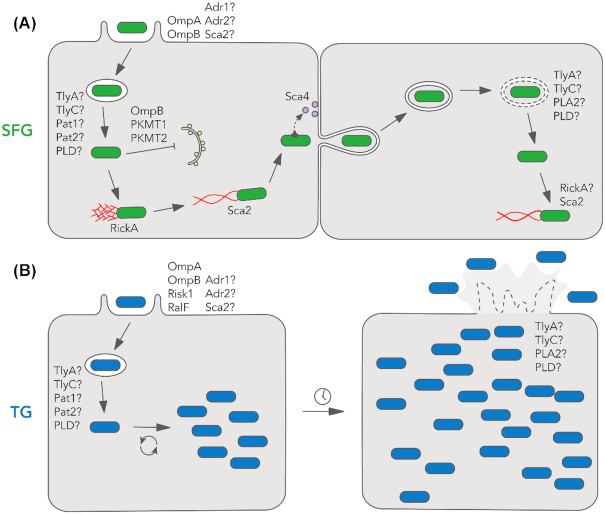Figure 1.
The intracellular life cycles of SFG and TG rickettsiae. (A) The SFG life cycle begins with host cell invasion, during which rickettsiae enter the host cell in a phagocytic vacuole. After escaping the phagosome, SFG rickettsiae initiate two phases of actin-based motility. SFG rickettsiae avoid host autophagy through lysine methylation of their surface proteins. Starting around 8 h after invasion, SFG rickettsiae begin replicating in the host cytosol. Subsequently, they undergo cell-to-cell spread, a process in which they directly traverse the cell–cell junction and enter the neighboring cell in a double-membrane vacuole. Upon escape, they can reinitiate the life cycle. (B) The TG life cycle begins similarly to SFG with invasion followed by rapid escape from the phagocytic vacuole. After replicating to a high density, the host cell lyses and TG rickettsiae can escape and spread to neighboring cells. (A and B) Rickettsial proteins that have been implicated in the life cycle are noted. Proteins that are speculated to be involved in a process are denoted with a question mark.

